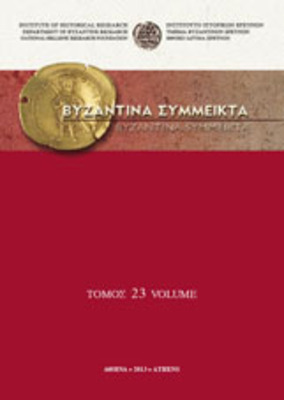Παρατηρήσεις στη χρήση των υστερορωμαϊκών πήλινων ενσφράγιστων "ιγδίων" : η περίπτωση των ιγδίων από τη Βόρειο Συρία
Part of : Βυζαντινά Σύμμεικτα ; Vol.18, No.2008, pages 35-75
Issue:
Pages:
35-75
Section Title:
archaeology
Author:
Abstract:
OBSERVATIONS ON THE USE OF LATE ROMAN IMPRESSED CLAY MORTARS: THE CASE OF “NORTH-SYRIAN MORTARIA” Mortars made of clay were largely diffused and used during the Roman Empire. This article focuses on a specific category of clay mortars, identified by their region of manufacture as “North-Syrian Mortaria”. This category, dated to the end of the 3rd and to the first half of the 4th century A.D., was largely diffused in the eastern Mediterranean. This study, after presenting the main characteristics of these mortars (shape, decoration, fabric, production centers, dating, distribution), addresses questions regarding their use. Traditionally, roman mortars were used in order to process (pound, pulverize, grind, mix) either solid or liquid/fluid products related to sustenance. Written sources as well as archaeological evidence support these uses. However, this study attempts to point out that they could also have a more specialised use, connected to the requirements of specific, well-organized workshops. This could be the case of the “North-Syrian Mortaria”. Regardless of the limited data concerning the exact archaeological context in which this type of mortar is found, the case-studies of mortars of this category found in Jalame, in ancient Messene and Olympia support this opinion.
Subject:
Subject (LC):
Keywords:
clay mortars, North Syria, late roman pottery, North Syria, Peloponnese, fourth century A.D., late roman, pottery sherds
Notes:
Αιώνες: 4ος - 5ος
Electronic Resources:




